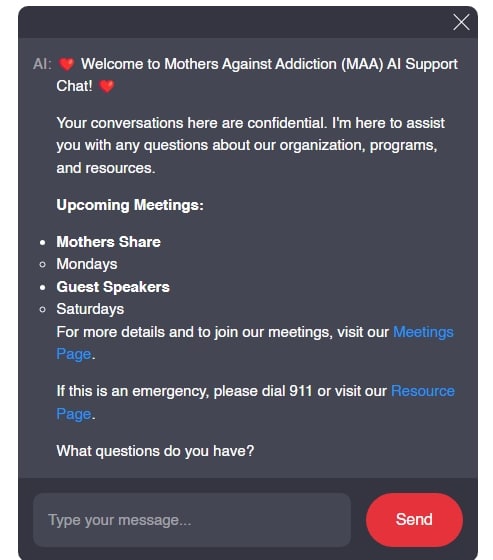In today’s fast-paced environment, organizations must develop a strategic plan that not only addresses current challenges but also anticipates future opportunities. A well-structured strategic plan is pivotal for steering success, guiding directives, and shaping impactful decisions that resonate at every level of operation. For organizations like Mothers Against Addiction, which supports parents grappling with children’s addiction, a thoughtful strategic plan is more than just a document; it’s a lifeline.
When we think about addiction and its impact, it’s crucial to remember stories of strength and resilience, much like those shared by Elizabeth Vargas. Parents often navigate a heartbreaking journey, trying to hold on while their child struggles. A strategic plan for our non-profit equips us to provide the resources, education, and support families desperately need.
By outlining the components of a strategic plan, we can foster an environment of healing, hope, and proactive action, forging a community that not only listens but also empowers.
1. Defining Core Values and Vision
Every strategic plan begins with a clear understanding of the organization’s core values and vision. This foundational step ensures that all directives align with the ultimate goals. For instance, our dedication to supporting parents is akin to how Patagonia emphasizes its commitment to environmental sustainability, which drives every decision made.
By establishing what matters most—compassion, community, and advocacy—Mothers Against Addiction can set a vision that resonates deeply with the families we serve. Just as Nicole Avant exemplifies community engagement through her work, our vision connects to the heart of addiction recovery. This offers a sense of direction for our strategic plan that’s rooted in empathy, motivating stakeholders to stay steadfast in their commitment.

2. Establishing Measurable Goals and Outcomes
Once core values are identified, the next step is to define specific, measurable goals. Our strategic plan incorporates key objectives that can be tracked over time, especially since addiction impacts the lives of many families across the country. Organizations like the American Red Cross have successfully set clear objectives for disaster response, which we can apply to our mission of aiding families through educational programs and support networks.
By detailing measurable outcomes, we can effectively gauge progress and make informed decisions. For example, incorporating a feedback loop from parents who have accessed our services will help fine-tune our approach, making sure we pivot strategies when necessary to meet the evolving needs of families struggling with addiction.
3. Analyzing The Competitive Landscape
Understanding the environment in which we operate is crucial for effective decision-making within our strategic plan. An analysis of similar organizations, akin to how Netflix assesses competitors like Disney+, reveals how to sharpen our focus. Using a SWOT analysis, we can pinpoint our strengths, weaknesses, opportunities, and threats.
By recognizing what sets us apart, such as our advocacy for policy changes or community education, we can position ourselves uniquely. This knowledge will inform our directives, ensuring that we not only meet but exceed the expectations of those we serve.

4. Leveraging Technology and Innovation
Incorporating technology into a strategic plan is no longer optional; it’s essential for success. Take Amazon, for example. Their use of AI technology to enhance customer experience offers insightful lessons for our organization. With the right digital tools, we can streamline our outreach, deliver educational content, and facilitate connections among families.
The landscape of addiction support is changing, and leveraging innovative technological solutions must be a cornerstone of our approach. From online forums to virtual support groups, technology can break down barriers and foster a community where no parent feels alone in their struggles.
5. Consolidating Partnerships and Collaborations
Strategic partnerships can significantly enhance the effectiveness of our initiatives. Collaborations can mirror successful alliances, such as between Starbucks and Nestlé, that expand reach and resources. By engaging with other organizations, government contracts, and community initiatives, we can pool resources and knowledge, enriching our strategic plan with insights from a variety of perspectives.
When we define partnerships, it’s crucial they align with our core mission—supporting families affected by addiction. By working together, we not only provide comprehensive resources but also strengthen our community and advocacy efforts.
6. Planning for Risks and Contingencies
Every strategic plan must incorporate a solid risk management component. The COVID-19 pandemic has taught us that agility is vital. Organizations like Zoom quickly adapted their services to meet the surge in demand for remote communication. We can adopt a similar approach: by anticipating challenges, we’ll secure our directives and be ready to pivot.
Identifying potential risks, from funding shortages to changes in legislation affecting addiction treatment, allows us to maintain continuity. Proactive risk planning ensures our organization can offer unwavering support, no matter the obstacles we face.
7. Continuous Evaluation and Feedback
A successful strategic plan incorporates a system for continuous evaluation and feedback. Regularly reviewing our performance against the goals we set helps us assess our impact. Google does this effectively through their Objectives and Key Results (OKRs), fostering accountability and focus across their teams.
For Mothers Against Addiction, involving parents in the feedback process will help us remain relevant. By prioritizing ongoing assessment, we can ensure our strategic plan reflects the real needs of families battling addiction.
Ultimately, a strategic plan that drives inspiring success in 2024 requires a blend of foresight, adaptability, and a steadfast commitment to our defined objectives. We must design initiatives that address immediate challenges while laying the groundwork for sustainable growth. By embedding our core values into strategies, utilizing innovative technologies, and strengthening partnerships, we can empower our community to find hope and healing.
As we embark on this journey, each decision should resonate with our vision—ensuring that every parent feeling lost in addiction receives the unwavering support they deserve. Together, we can inspire lives and cultivate resilient communities. Let’s make 2024 a year of transformation, reaching out to those who need it most, one life at a time.
Strategic Plan: Fun Trivia and Interesting Facts
The Backbone of Effective Strategies
When it comes to creating a strategic plan, folks often assume it’s just numbers and projections. But hold on! There’s so much more behind the scenes. Did you know that the U.S. suicide rate has risen over 30% in the last two decades? This resonates deeply with organizations aiming for meaningful change, especially those like Mothers Against who support parents of children facing addiction. When planning is done right, it can pivot society’s dialogue and focus, much like how shifts in entertainment, like the captivating work of actress Rebecca Henderson in various movies and TV shows, can shift public perception around tough topics.
The Power of Clear Goals
Crafting a strategic plan isn’t all about the heavy stuff—there’s room for a little light-hearted trivia too! A noteworthy facet is the reach of travel plans. For instance, flights from LAX To Dfw have skyrocketed in popularity, showcasing how strategic moves in business or personal life can connect us to opportunities. Similarly, a solid strategic plan should aim to connect resources to goals, creating pathways for success. Just like kids watching the cast of That’s So Raven learn life lessons through their wild adventures, groups using a strategic blueprint can navigate their challenges more effectively, opening doors to healing and support.
Aiming for Success
And speaking of challenges, who can forget the pain of addiction and the struggles with Withdrawals? Unfortunately, many face tough times that could be alleviated with well-crafted plans and resources. A strategic plan can provide much-needed structure, guiding nonprofits to allocate their resources wisely, ensuring that the individuals they serve receive the right help. Just as understanding medications like Oxycodone acetaminophen 5 325 is essential in the medical field, grasping the nuances of a strategic plan is vital for organizations striving for real-world impacts. Successful planning can lead us closer to solutions that make a meaningful difference in communities, such as Hasbrouck Heights, where support systems are desperately needed.
So, whether you’re putting together a plan for life or just your next trip, remember that every little piece tells a story—and each story can make a difference. When well-executed, a strategic plan blends facts, resources, and aspirations into a roadmap that can inspire change today.





























